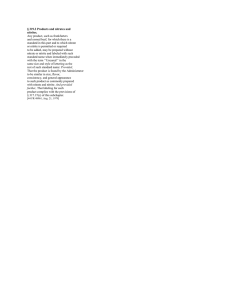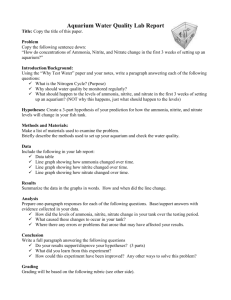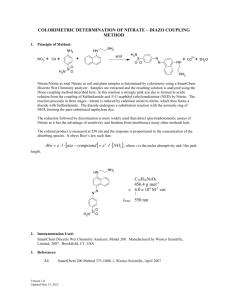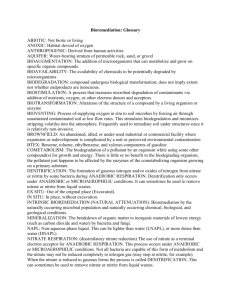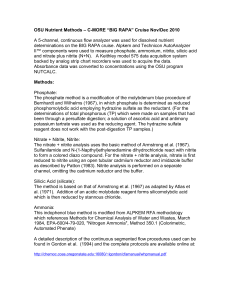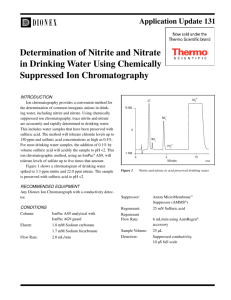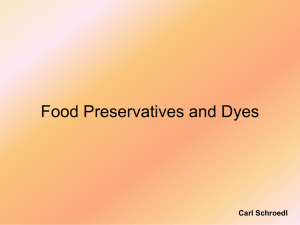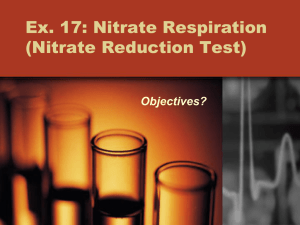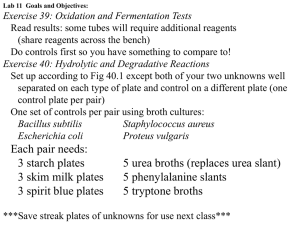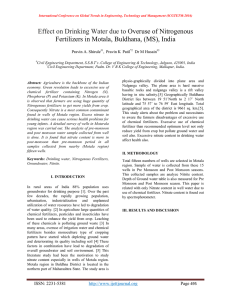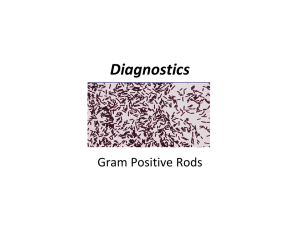This study was carried out to determine the levels of nitrate, nitrite
advertisement
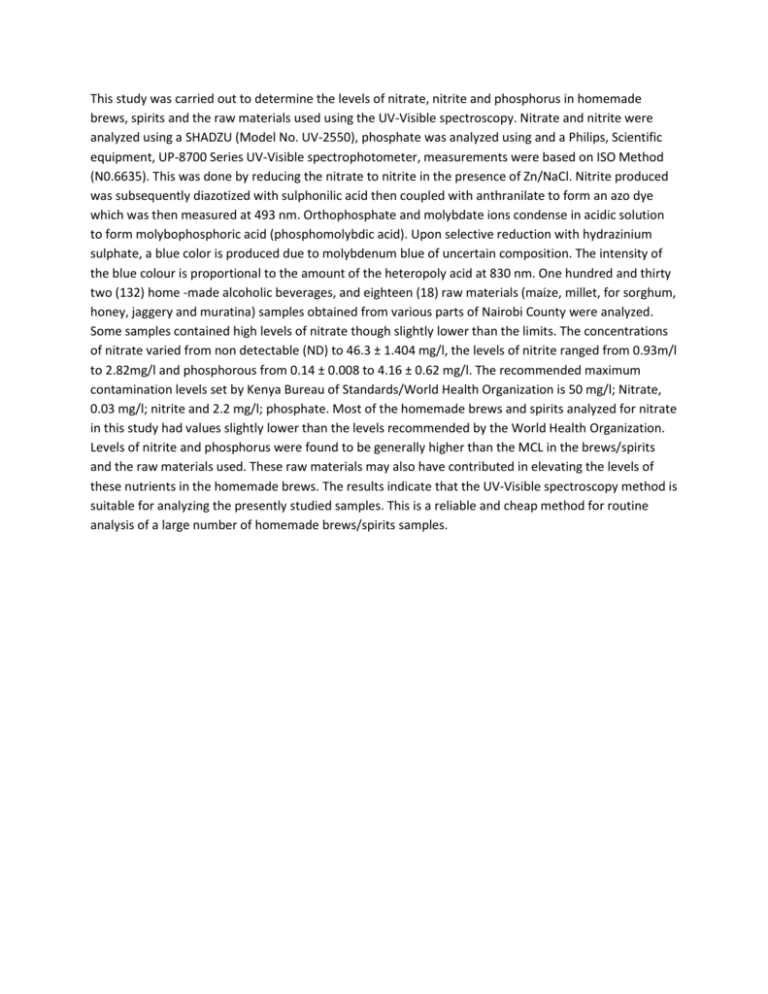
This study was carried out to determine the levels of nitrate, nitrite and phosphorus in homemade brews, spirits and the raw materials used using the UV-Visible spectroscopy. Nitrate and nitrite were analyzed using a SHADZU (Model No. UV-2550), phosphate was analyzed using and a Philips, Scientific equipment, UP-8700 Series UV-Visible spectrophotometer, measurements were based on ISO Method (N0.6635). This was done by reducing the nitrate to nitrite in the presence of Zn/NaCl. Nitrite produced was subsequently diazotized with sulphonilic acid then coupled with anthranilate to form an azo dye which was then measured at 493 nm. Orthophosphate and molybdate ions condense in acidic solution to form molybophosphoric acid (phosphomolybdic acid). Upon selective reduction with hydrazinium sulphate, a blue color is produced due to molybdenum blue of uncertain composition. The intensity of the blue colour is proportional to the amount of the heteropoly acid at 830 nm. One hundred and thirty two (132) home -made alcoholic beverages, and eighteen (18) raw materials (maize, millet, for sorghum, honey, jaggery and muratina) samples obtained from various parts of Nairobi County were analyzed. Some samples contained high levels of nitrate though slightly lower than the limits. The concentrations of nitrate varied from non detectable (ND) to 46.3 ± 1.404 mg/l, the levels of nitrite ranged from 0.93m/l to 2.82mg/l and phosphorous from 0.14 ± 0.008 to 4.16 ± 0.62 mg/l. The recommended maximum contamination levels set by Kenya Bureau of Standards/World Health Organization is 50 mg/l; Nitrate, 0.03 mg/l; nitrite and 2.2 mg/l; phosphate. Most of the homemade brews and spirits analyzed for nitrate in this study had values slightly lower than the levels recommended by the World Health Organization. Levels of nitrite and phosphorus were found to be generally higher than the MCL in the brews/spirits and the raw materials used. These raw materials may also have contributed in elevating the levels of these nutrients in the homemade brews. The results indicate that the UV-Visible spectroscopy method is suitable for analyzing the presently studied samples. This is a reliable and cheap method for routine analysis of a large number of homemade brews/spirits samples.
